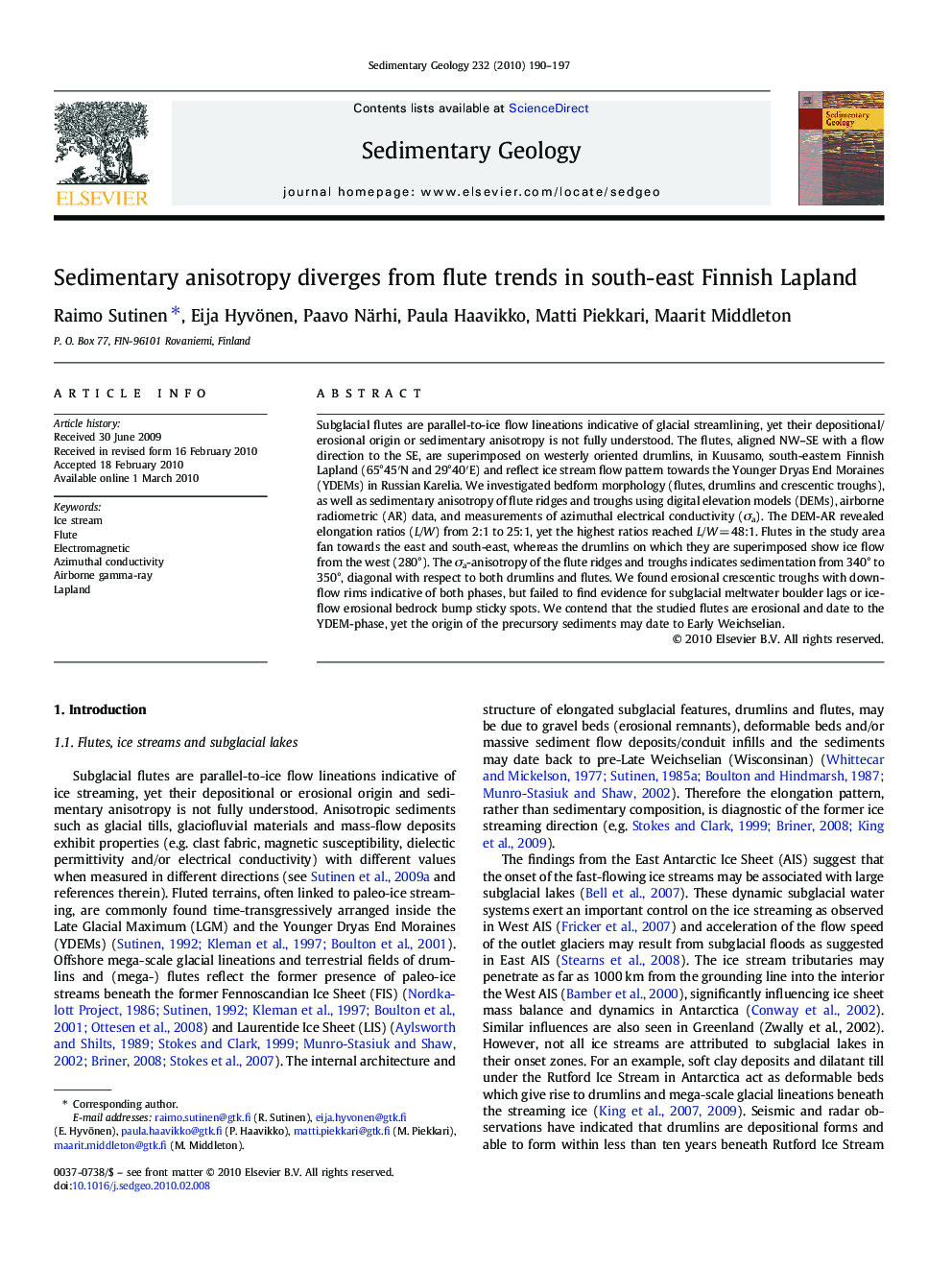| Article ID | Journal | Published Year | Pages | File Type |
|---|---|---|---|---|
| 4690065 | Sedimentary Geology | 2010 | 8 Pages |
Abstract
Subglacial flutes are parallel-to-ice flow lineations indicative of glacial streamlining, yet their depositional/erosional origin or sedimentary anisotropy is not fully understood. The flutes, aligned NW-SE with a flow direction to the SE, are superimposed on westerly oriented drumlins, in Kuusamo, south-eastern Finnish Lapland (65°45â²N and 29°40â²E) and reflect ice stream flow pattern towards the Younger Dryas End Moraines (YDEMs) in Russian Karelia. We investigated bedform morphology (flutes, drumlins and crescentic troughs), as well as sedimentary anisotropy of flute ridges and troughs using digital elevation models (DEMs), airborne radiometric (AR) data, and measurements of azimuthal electrical conductivity (Ïa). The DEM-AR revealed elongation ratios (L/W) from 2:1 to 25:1, yet the highest ratios reached L/W = 48:1. Flutes in the study area fan towards the east and south-east, whereas the drumlins on which they are superimposed show ice flow from the west (280°). The Ïa-anisotropy of the flute ridges and troughs indicates sedimentation from 340° to 350°, diagonal with respect to both drumlins and flutes. We found erosional crescentic troughs with down-flow rims indicative of both phases, but failed to find evidence for subglacial meltwater boulder lags or ice-flow erosional bedrock bump sticky spots. We contend that the studied flutes are erosional and date to the YDEM-phase, yet the origin of the precursory sediments may date to Early Weichselian.
Related Topics
Physical Sciences and Engineering
Earth and Planetary Sciences
Earth-Surface Processes
Authors
Raimo Sutinen, Eija Hyvönen, Paavo Närhi, Paula Haavikko, Matti Piekkari, Maarit Middleton,
